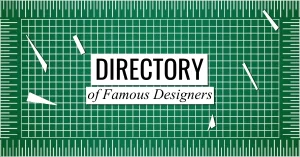As a freelance graphic designer or illustrator, one of the most challenging aspects of your job can be determining how much to charge for your work. You want to be fair to yourself and your clients, but you also want to ensure that you’re charging enough to make a living. In this freelance design pricing guide, we’ll cover some key factors to consider when pricing your freelance work as a graphic designer or illustrator.
How to set an hourly rate for a freelance design project?
The first step in pricing your freelance work is to determine your hourly rate. This will be the foundation for all of your pricing decisions. You should consider your experience level, skill set, and the local market to determine your hourly rate. When calculating your hourly rate, consider how much you need to earn to make a living. Take into account your living expenses, overhead costs, and taxes. Remember that as a freelancer, you’ll need to cover your expenses such as health insurance, equipment, and software.
Recommended Software:
To better track your working hours on a freelance project, software like Toggl can be quite useful.
Consider the project scope
Once you’ve determined your hourly rate, you need to consider the scope of the project. This includes the complexity of the project, the amount of time it will take to complete it, and the level of skill required. For example, a simple logo design may take less time and effort than a full branding project, which may require extensive research, multiple design concepts, and revisions. It’s important to consider the effort and deliverables for each project and adjust your pricing accordingly.
Research the market
It’s important to research the market to ensure that your pricing is competitive. Research the rates of other freelance designers and illustrators in your area or those who work in your niche. This will give you an idea of what clients are willing to pay and what the market can bear. You can also research industry standards and pricing guides to get a general idea of what you should be charging. Remember that these rates are often just guidelines and should not be considered the final word on pricing.
Consider your client’s budget
When pricing your freelance work, it’s important to consider your client’s budget. This can be a tricky balancing act because you want to be fair to yourself and charge a rate that is in line with your skills and experience, but you also want to be sensitive to your client’s budget. If your client has a small local business, consider offering a reduced rate or a payment plan. This can help you secure the project and build a relationship with the client for future work.
Account for revisions and additional work
When pricing your freelance work, it’s important to account for revisions and additional work. This includes revisions to the initial design, additional design concepts, and other changes that may arise during the project. Make sure to outline your revision policy in your contract so that you and your client are on the same page. You should also consider charging an additional fee for revisions beyond a certain number or for work outside the scope of the initial project.
Set clear expectations
When pricing your freelance work, it’s important to set clear expectations with your client. This includes the scope of the project, the timeline, and the payment schedule. Make sure to outline all these details in your contract and discuss them with your client before starting work. This will help prevent misunderstandings and ensure that both, you and your client are on the same page.
Pricing your freelance work as a graphic designer or illustrator can be challenging, but by following the tips in this freelance design pricing guide, you can ensure that you’re charging a fair rate that reflects your skills and experience. Remember to consider your hourly rate, the project scope, the market, your client’s budget, revisions and additional work, and set clear expectations. With a little research and preparation, you can confidently price your freelance work and build a successful career as a graphic designer or illustrator.







0 Comments